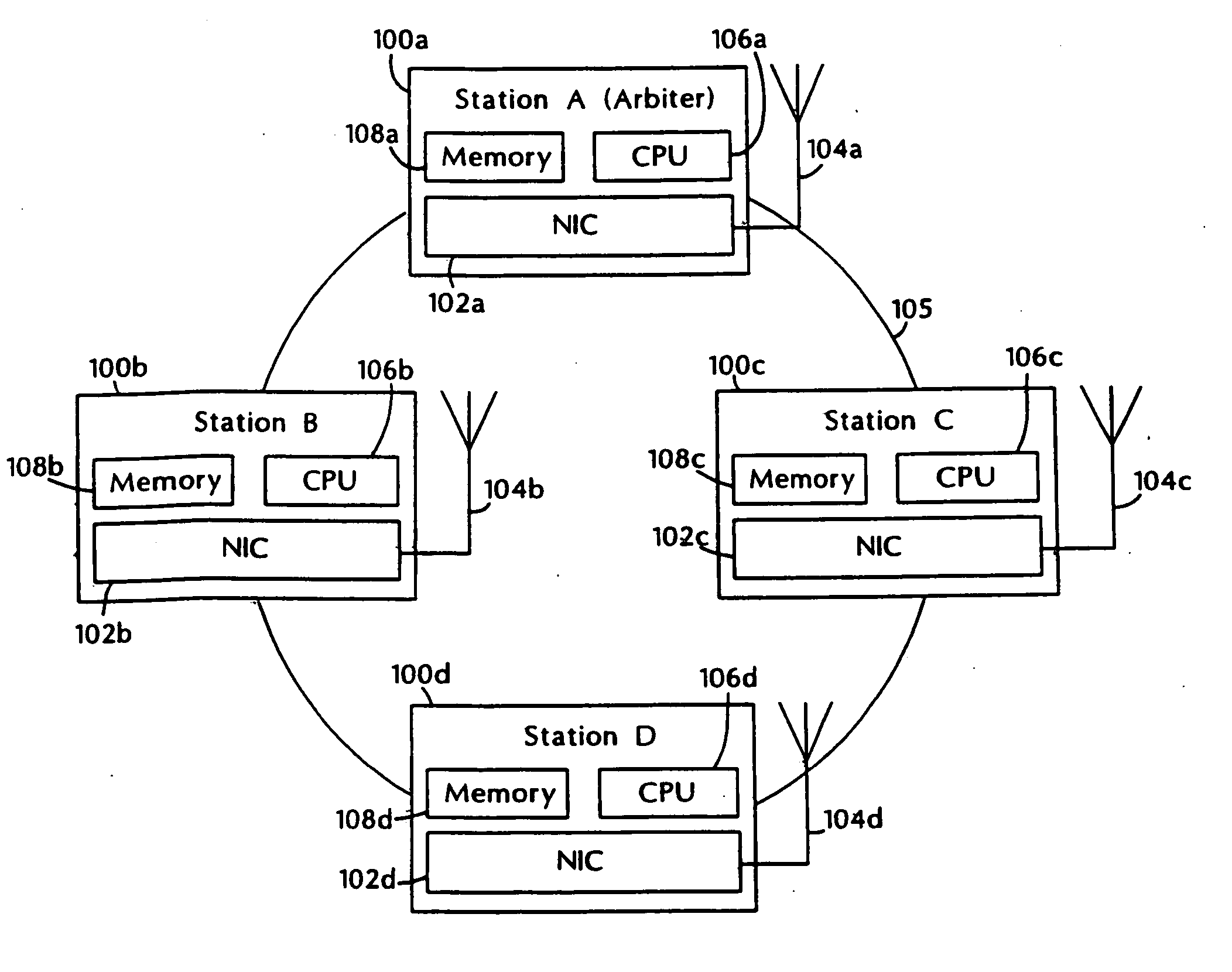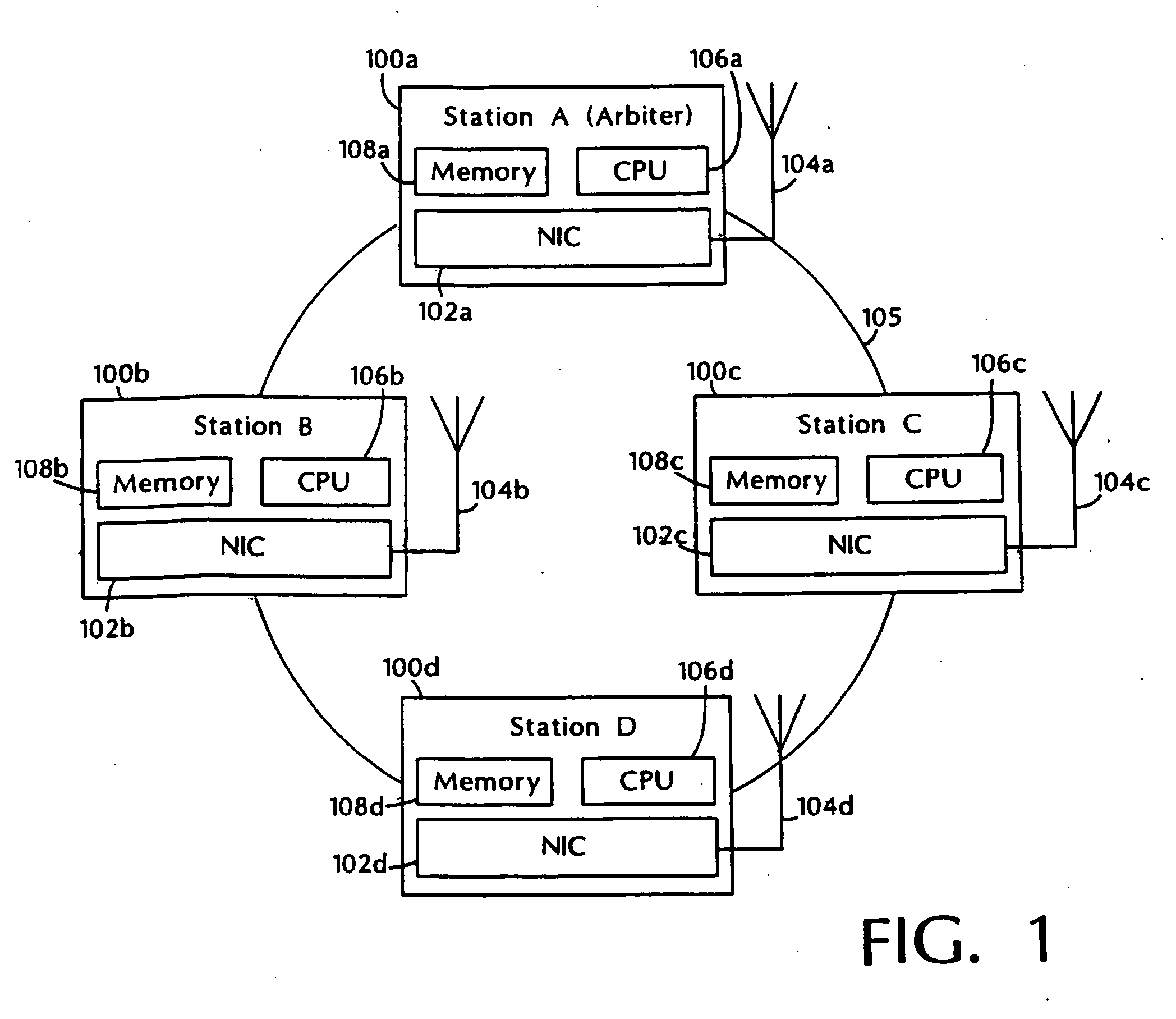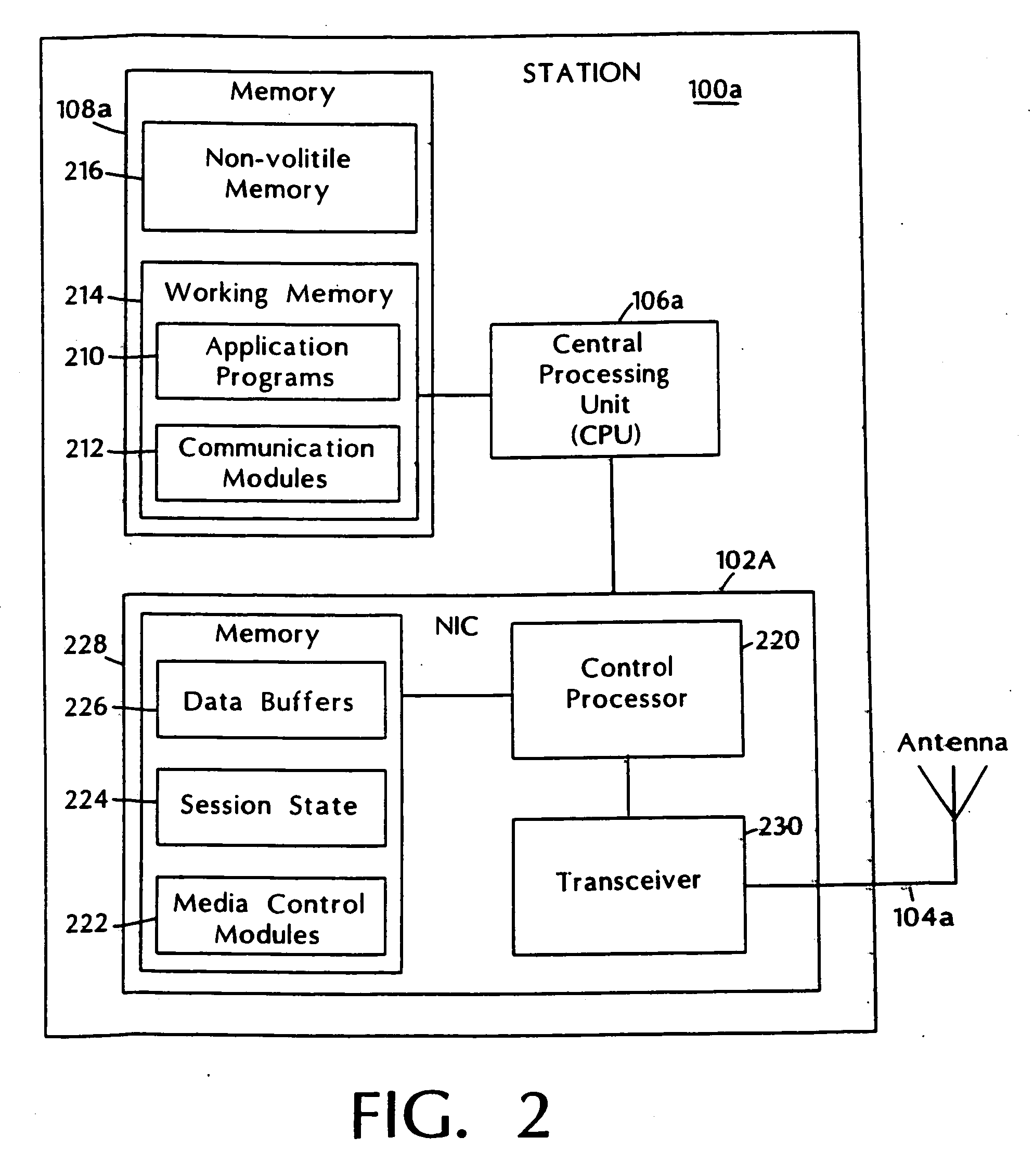Adaptive media control
a technology of media control and communication network, applied in data switching networks, loop networks, multiplex communication, etc., can solve the problems of corrupting data being transmitted, higher error rates, and low achievable data capacity
- Summary
- Abstract
- Description
- Claims
- Application Information
AI Technical Summary
Benefits of technology
Problems solved by technology
Method used
Image
Examples
first embodiment
[0027] In this first embodiment, one station (e.g., station 100a) is designated as the arbiter station. The arbiter station is responsible for managing allocation and use of communication resources. As will be described further below, arbiter station 100a accepts requests to admit communication sessions into the system, assigns communication rates to admitted sessions and, in accordance with their assigned communication rates, polls stations to transmit data for particular sessions.
[0028] In general, the arbiter session polls sessions frequently enough to sustain the assigned communication rates for those sessions, but does not poll substantially more often than required to sustain the assigned rates. This polling approach avoids use of bandwidth with the overhead of unnecessary polling.
[0029] Sessions belong to one of two classes. The first class includes sessions with rate or delay related quality-of-service requirements. This class is referred to as the QoS class. The other clas...
second embodiment
[0110] the invention admits and allocates data rates for both QoS sessions and non-QoS sessions according to an overall utility function. In addition to specifying minimum and maximum data rates rk and Rk for a session k, a user also specifies a priority (or utility) Pk for the session. In addition, non-QoS sessions k also have requirements rk, Rk and Pk specified, although in general Pk is lower than that used for QoS sessions, and rk may be zero if a sustained data rate is not required.
[0111] The overall utility function in this second embodiment is Σk PkXk. This utility function is maximized subject to the constraints that rk≦Xk≦Rk for all sessions k and ΣkAkXk≦Uc. This Linear Programming formulation is a version of the well-knownknapsack problem. The optimal solution is found by ordering the sessions in descending order according to Pk / Ak. Sessions are allocated in order. Unless the communication capacity Uc is reached, each session receives its maximum desired data rate Xk=Dk. ...
PUM
 Login to View More
Login to View More Abstract
Description
Claims
Application Information
 Login to View More
Login to View More - R&D
- Intellectual Property
- Life Sciences
- Materials
- Tech Scout
- Unparalleled Data Quality
- Higher Quality Content
- 60% Fewer Hallucinations
Browse by: Latest US Patents, China's latest patents, Technical Efficacy Thesaurus, Application Domain, Technology Topic, Popular Technical Reports.
© 2025 PatSnap. All rights reserved.Legal|Privacy policy|Modern Slavery Act Transparency Statement|Sitemap|About US| Contact US: help@patsnap.com



